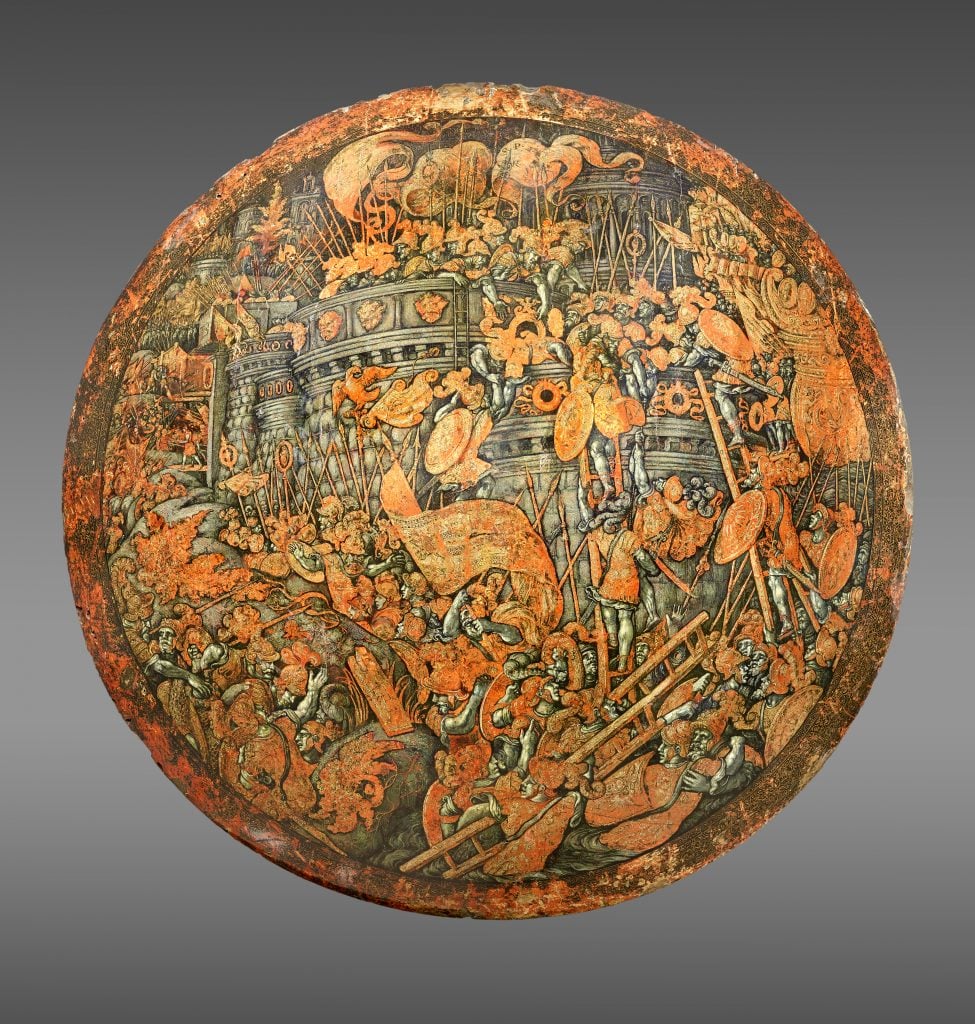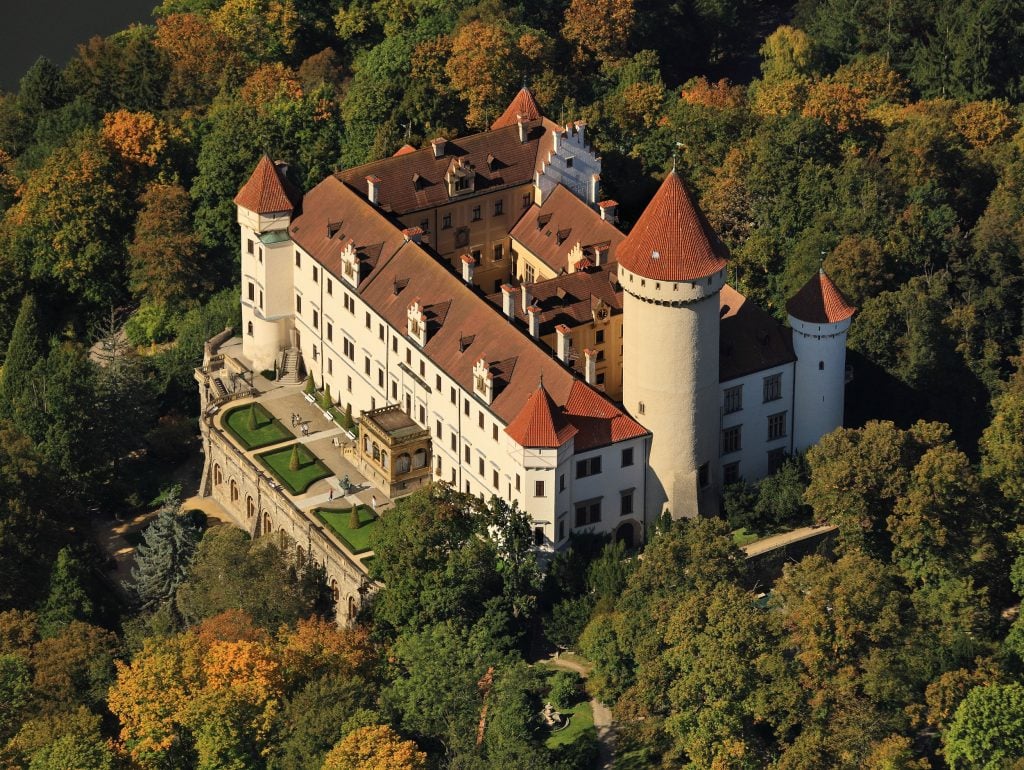Art World
The Philadelphia Museum of Art Will Return an Ancient ‘Pageant Shield’ Looted by Nazis to the Czech Republic
Czech ambassador calls the case a prime example of "best practices" in restitution.

Czech ambassador calls the case a prime example of "best practices" in restitution.

Eileen Kinsella

The Philadelphia Museum of Art (PMA) and the Czech Republic’s National Heritage Institute have reached an agreement by which an Italian “pageant shield,” with decoration attributed to Italian Renaissance artist Girolamo di Tommaso da Treviso, will be returned to the Czech Republic.
The shield, which has been on display in the museum’s arms and armor gallery since 1976, was confirmed as belonging to the Czech Republic. It was part of a collection donated to the museum by Carl Otto Kretzschmar von Kienbusch.
In a statement, outgoing museum director Timothy Rub and Naděžda Goryczková, the general director of the National Heritage Institute, said the return reflects “the spirit of cooperation that has guided all of the discussions between the museum and the Czech Republic about this work of art and has resulted in this mutually satisfactory resolution.”
The shield was previously owned by Archduke Franz Ferdinand, whose assassination in 1914 sparked World War I. The archduke owned one of Europe’s most important collections of arms and armor, which was displayed at his residence, Konopiště Castle, near Prague.
The elaborate decoration of the shield is attributed to Girolamo di Tommaso da Treviso, based on a design by the painter Giulio Romano. It was made around 1535 of wood, linen, gesso, gold, and pigment. The scene depicted on its exterior shows the storming of New Carthage in present-day Spain—an important episode of the Second Punic War (218 to 201 B.C.E.). The shield was probably commissioned for one of the ceremonies that were held throughout Italy to welcome Holy Roman Emperor Charles V.
According to the museum statement, which contains a detailed history of the shield, when the former Habsburg imperial properties were redistributed after the war, the castle and its collections became the property of the government of the newly formed Czechoslovakia in 1919.

Konopiště Castle, Benešov, Czech Republic, 2011. Photo courtesy National Heritage Institute (NPÚ), Czech Republic.
In 1939 the Nazi government annexed the part of Czechoslovakia where the castle is located, and in 1943 the German army confiscated the castle’s armor collection, including the shield, and took it to Prague, where it was intended to be displayed in a new military museum.
However, Hitler’s curator of arms and armor, Leopold Ruprecht, cherry-picked the best of the collection, inventoried it, and promptly sent it to Vienna, with the hope of setting aside the finest objects for Hitler’s planned museum in Linz, Austria.
At the end of the war, large caches of Konopiště castle objects were recovered by the Allies and returned to Czech authorities in 1946, but among 15 pieces that remained missing was a shield whose description was similar to that of the pageant shield. According to the statement, the museum was “unable conclusively to identify the shield in its collection as one of the unrecovered objects from the Konopiště Castle armor collection” on the basis of previously available documentation.
For the past five years, the PMA has been collaborating with historians in the Czech Republic to evaluate the history and provenance of the Italian pageant shield. Recent research identified its listing in pre-World War II inventories, along with a photograph dated to around 1913 that showed the museum’s shield as it was displayed at Konopiště.
Together, the evidence “persuasively identify the shield as the one illegally taken from Konopiště Castle by the Nazis and never restituted,” per the statement. Based on this information, the museum board unanimously concluded that rightful title in the work belonged to the Czech Republic and approved the return of the armor at its meeting this past June.
“A work that had been lost during the turmoil of World War II is being happily restituted, and out of this has come an exceptional scholarly partnership,” said Rub.
The Czech ambassador to the U.S., Hynek Kmoníček, said that the museum deserves enormous credit for being so forthcoming in returning this immensely valuable piece of art to the Czech Republic. He called the case “a prime example of best practices in restitution.”
Czech authorities plan to reinstate the shield as part of the collections of the National Heritage Institute and make it available once again to the public in Europe. As part of the agreement, the Czech Republic has agreed to consider any future loan request for the shield from the museum.